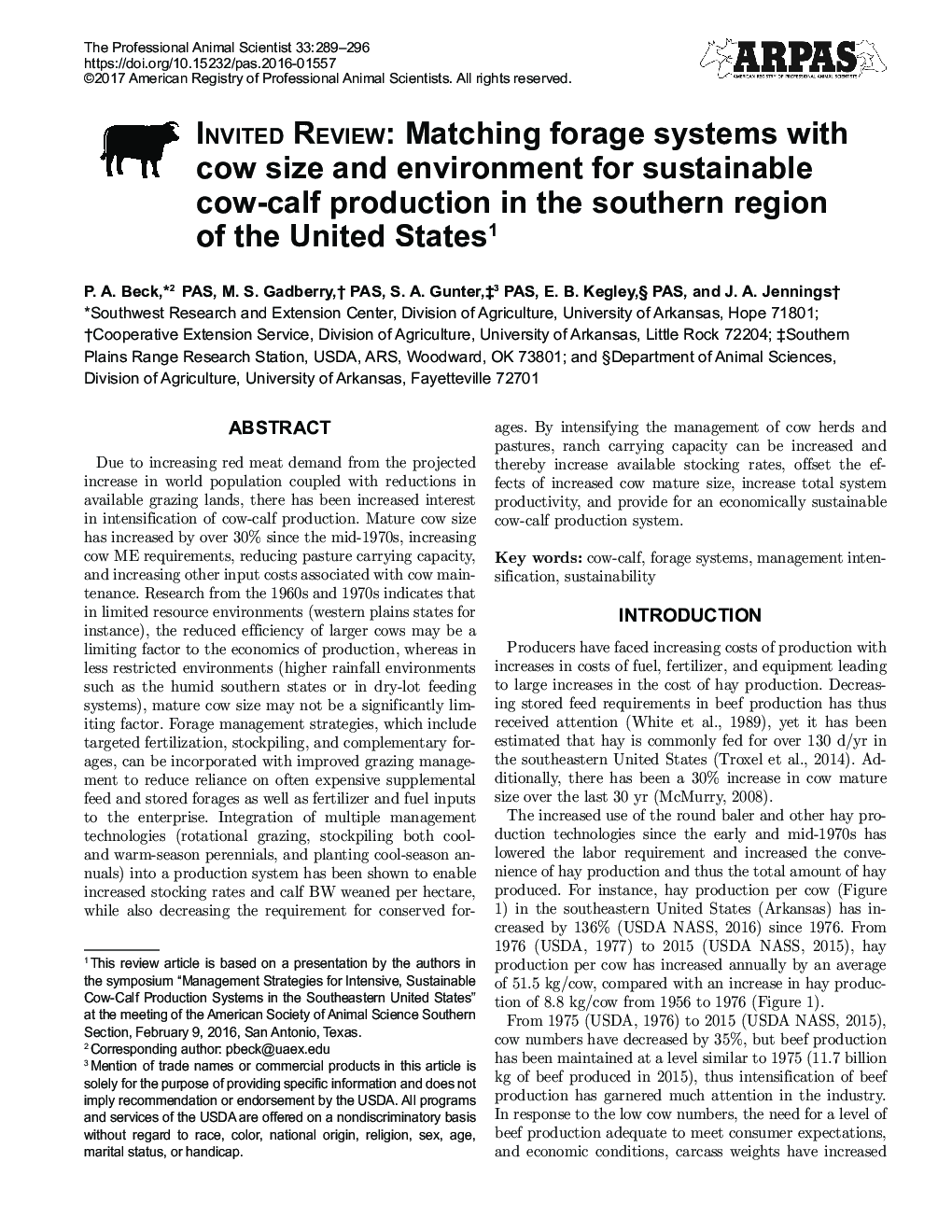| Article ID | Journal | Published Year | Pages | File Type |
|---|---|---|---|---|
| 8503748 | The Professional Animal Scientist | 2017 | 8 Pages |
Abstract
Due to increasing red meat demand from the projected increase in world population coupled with reductions in available grazing lands, there has been increased interest in intensification of cow-calf production. Mature cow size has increased by over 30% since the mid-1970s, increasing cow ME requirements, reducing pasture carrying capacity, and increasing other input costs associated with cow maintenance. Research from the 1960s and 1970s indicates that in limited resource environments (western plains states for instance), the reduced efficiency of larger cows may be a limiting factor to the economics of production, whereas in less restricted environments (higher rainfall environments such as the humid southern states or in dry-lot feeding systems), mature cow size may not be a significantly limiting factor. Forage management strategies, which include targeted fertilization, stockpiling, and complementary forages, can be incorporated with improved grazing management to reduce reliance on often expensive supplemental feed and stored forages as well as fertilizer and fuel inputs to the enterprise. Integration of multiple management technologies (rotational grazing, stockpiling both cool-and warm-season perennials, and planting cool-season annuals) into a production system has been shown to enable increased stocking rates and calf BW weaned per hectare, while also decreasing the requirement for conserved forages. By intensifying the management of cow herds and pastures, ranch carrying capacity can be increased and thereby increase available stocking rates, offset the effects of increased cow mature size, increase total system productivity, and provide for an economically sustainable cow-calf production system.
Keywords
Related Topics
Life Sciences
Agricultural and Biological Sciences
Animal Science and Zoology
Authors
P.A. PAS, M.S. PAS, S.A. PAS, E.B. PAS, J.A. Jennings,
